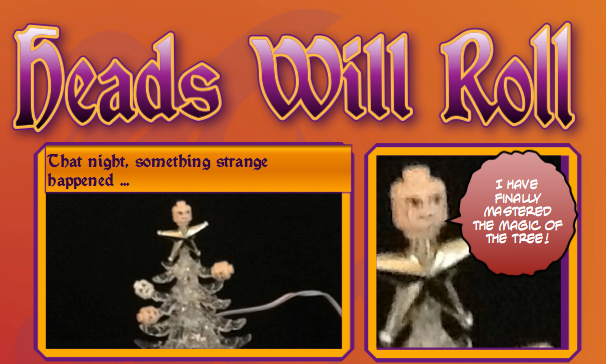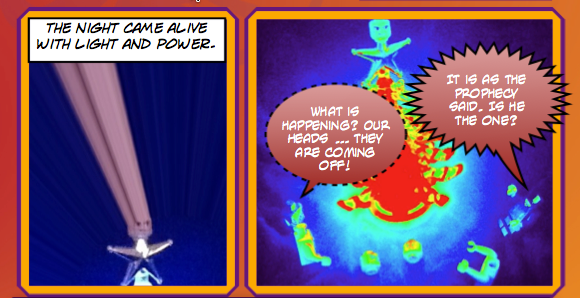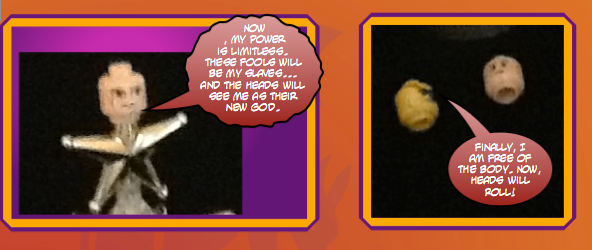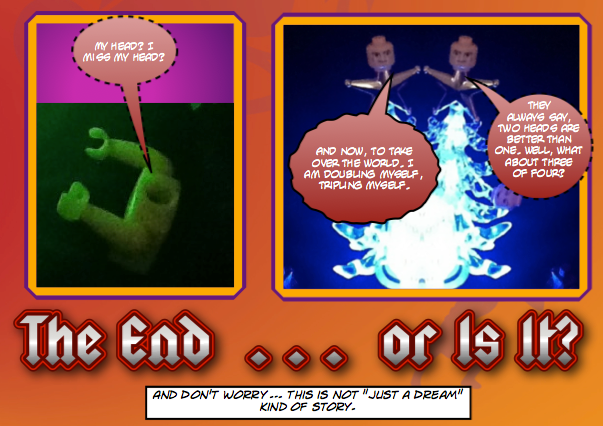The other day, as part of our toy hacking with the Making Learning Connected MOOC, I shared out some images from a project in which I removed the heads of some lego characters and stuck them on a small USB-powered holiday tree, creating a somewhat eerie scene.
That was fun, but I kept returning to the question of: now what? In other words, how does this act of hacking toys connect to writing? This is not just for me, playing around in the MOOC, but for grounding our work into possibilities for classroom activities through the lens of Connected Learning. As we move into the second part of this Make Cycle, we are being asked to reflect on the experience of our play/work this week. For me, that often means stepping back from the jumping and trying to frame what I have done in ways that might translate to the classroom.
What I needed here with the Lego Head tree was to take the next step, to move beyond the cool factor of the photos. I needed to tell a story, to connect the hack to literacy. Why were all those headless bodies reaching out for the tree? Why were heads in the tree? And who was that dude at the top? As I mulled over how I might use the photos to tell a story, I was trying to figure out the best way to do that, too. I realized too late (after I had returned the heads and packed up the tree) that I should have shot a video on Vine. Oh well.
I decided to use Comic Life and create a comic story about the scene. I’ve had Comic Life on computer for some time, and used to use it regularly for my Boolean Squared comic, but it has been a few years (and on a whole different computer), and the program did not work as I wanted it to (more on my week of failure tomorrow). I kept at it, and this is what I came up with:




Peace (in the hack),
Kevin